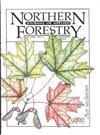An assessment of forest cover and impervious surface area on family forests in the New York City Watershed
引用次数: 6
Abstract
Between 1984 and 2000, the parcelization of family forests in the New York City Watershed caused a decline in average parcel size from 19 to 16 ac. However, little is known about the timing and intensity of development on subdivided parcels, which has the potential to negatively affect water quality by increasing nonpoint source pollution associated with nutrient runoff and erosion intensified by increased impervious surface area. Using a combination of field measurements and analysis of digital orthoimagery, this study quantified forest cover and impervious surface area on new parcels resulting from subdivision and compared subdivided parcels to intact parcels. Measurements of buildings, driveways, and other features show that by 2005, parcels subdivided between 1984 and 2000 were developed to nearly the same intensity as intact parcels, with 68% of parcels classified as developed. Results indicate that residential development on subdivided parcels has added more than 640 ac of impervious surfaces on family forest since 1984, apparently without being accompanied by observable net reductions in forest cover at the landscape level. These trends have important implications for public policy intended to maintain a forested watershed and prevent the degradation of drinking water quality from nonpoint source pollution associated with development.纽约市流域家庭森林的森林覆盖和不透水地表面积评价
1984年至2000年间,纽约市流域家庭森林的包裹化导致平均包裹面积从19公顷下降到16公顷。然而,对细分包裹的开发时间和强度知之甚少,这可能会增加与养分径流和侵蚀相关的非点源污染,从而对水质产生负面影响。本研究结合实地测量和数字正射影像分析,量化了细分后新地块的森林覆盖率和不透水表面积,并将细分后的地块与完整地块进行了比较。对建筑物、车道和其他特征的测量表明,到2005年,1984年至2000年间细分的地块的开发强度与完整地块几乎相同,68%的地块被列为已开发地块。结果表明,自1984年以来,住宅开发在细分地块上增加了超过640 ac的家庭森林不透水表面,显然没有伴随着可观察到的森林覆盖在景观水平上的净减少。这些趋势对旨在维持森林流域和防止与发展有关的非点源污染导致饮用水质量退化的公共政策具有重要影响。
本文章由计算机程序翻译,如有差异,请以英文原文为准。
求助全文
约1分钟内获得全文
求助全文

 求助内容:
求助内容: 应助结果提醒方式:
应助结果提醒方式:


